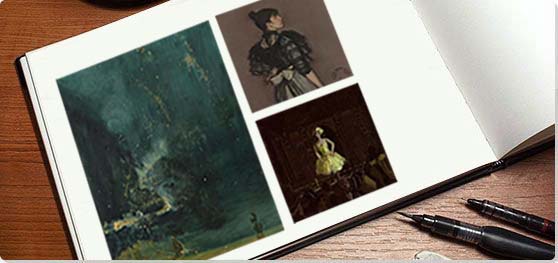Summary of British Impressionism
The movement of Impressionism, which originated in France, was concerned with capturing the momentary impression made by a visual scene on the artist's eye. It took hold in Britain both through continental influences and independent lines of development, from J.M.W. Turner's expressive seascapes to the delicate night scenes of James Abbott McNeill Whistler. Whistler's work of the 1860s-80s had a profound impact on a younger generation of painters such as Walter Sickert and Philip Wilson Steer, who were involved in creating the defining networks and events of British Impressionism, including the New English Art Club and the London Impressionists exhibition, towards the end of the 1880s. Meanwhile, another group of Whistler's acolytes in Scotland, the Glasgow Boys, developed a distinctive Impressionist-influenced style equally indebted to the Naturalism of Jules Bastien-Lepage. While all this was happening, British artists were also developing vital and sustaining creative relationships with French contemporaries and masters, such as Sickert with Degas, which also fed into the evolution of British Impressionism.
Key Ideas & Accomplishments
- British art is often seen to have predicted Impressionism before its emergence in France, in the Romantic landscape painting of J.M.W. Turner and John Constable. These artists used expressive brushwork to capture the dazzling and evanescent effects of light within a natural vista. As such, after British artists turned to Impressionism - generally influenced by contemporaries such as Monet and Whistler - many critics held that they were in fact reviving a native tradition.
- The influence of Impressionism in Britain is tied up unavoidably with the figure of James Abbott McNeill Whistler, whose gloomy, almost liquid cityscapes and river-side scenes (including his Nocturnes of 1866-1875) influenced the entire development of the Impressionist movement, including Monet's genre-defining work. Through Whistler, some British Impressionism acquired a more sultry, decadent character than its continental cousin, contributing to the emergence of the Aesthetic Art and Art for Art's Sake trends of the fin-de-siècle.
- Naturalism, and especially the work of Jules Bastien-Lepage, was arguably as important in defining Impressionism in Britain as French Impressionism proper. By the early 1880s, when the latter movement's effects were being felt most profoundly across the English Channel, they arrived concurrently with the message of Bastien-Lepage. This artist used Impressionist backgrounds to enclose detailed foreground scenes depicting emotive social realities. In the work of many British artists associated with Impressionism, it is hard to disentangle the influences of Naturalism and Impressionism.
- The after-effects of Impressionism in Britain, including the emergence of Post-Impressionism, were at least as profound as those of Impressionism in the first instance. In 1910, the critic Roger Fry staged his famous exhibition Manet and the Post-Impressionists in London, presenting the work of Van Gogh, Gauguin, Cézanne, Manet and others. The exhibition and associated aesthetics influenced a generation of British writers, artists, and designers, including Virginia Woolf, the Bloomsbury set, and the Camden Town Group.
Artworks and Artists of British Impressionism
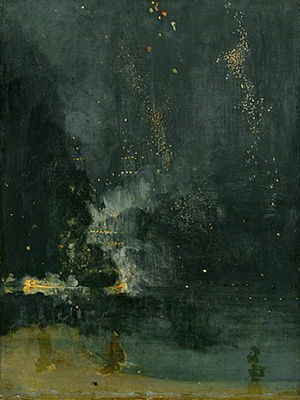
Nocturne in Black and Gold: The Falling Rocket
In this sparkling and sultry scene, Whistler depicts revelers in the Cremorne Gardens, a park by the banks of the River Thames in south London. Through a haze of black, gold, and green pigment, Whistler evokes the misty spectacle of a fireworks display. In the foreground, figures are picked out almost as specters or shadows, their thin silhouettes allowing the background wash - created with highly liquid paint - to show through. A fireworks display is recorded through expressionistic dashes of gold, set against a darker area to the left representing the engulfing murk of the night sky.
Many of Whistler's concerns in this painting reflect fundamental aspects of Impressionism, even as he sought to preserve his individuality as an artist, most obviously the decision to depict a single moment in time, emphasized by freezing the exploding rocket in mid-air. His painterly brushwork, leaving traces and flourishes on the canvas, not attempting to hide the artist's role in creating the artwork, also aligns with key feature of Impressionism. At the same time, the blurry, smoky effect of the painting was a realistic one, a response to the highly polluted state of London skies during the 1870s. In his famous "Ten O Clock Lecture" on art, delivered in February 1885, Whistler rhapsodized on that time of evening "when the evening mist clothes the riverside with poetry, as with a veil - and the poor buildings lose themselves in the dim sky - and the tall chimneys become campanile - and the warehouses are palaces in the night - and the whole city hangs in the heavens, and faireyland [sic.] is before us ."
It is worth emphasizing not only the significance of Whistler's artwork to the development of Impressionism as a whole - his biographer Daniel Sutherland states that "nothing in the first Impressionist exhibition [held in Paris in 1874] could touch it " - but in particular its impact on Whistler's British contemporaries and followers. Artists such as Walter Sickert would combine the bleak tonal brilliance and hazy ambience of the Nocturne series with individual features and emphases of their own, in Sickert's case a focus on social spectacle learned from Edgar Degas, to produce uniquely British or London-centric Impressionist genre pieces.
Oil on canvas - The Detroit Institute of Arts
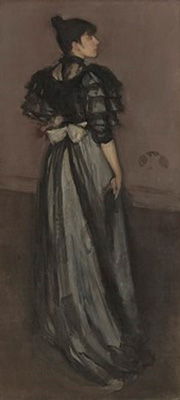
Mother of Pearl and Silver: The Andalusian
In this glamorous portrait of a belle époque beauty, Whistler shows how his Impressionist style translated into portraiture. The model's informal posture - as if she were responding to a voice off-frame - reflects that concern with capturing the evanescent moment that was typical of Impressionism. The artist's emphasis on the long, curvaceous sweep of back and dress, meanwhile, and the sense that we are invited to gaze almost secretively or furtively on the model because of her orientation away from us, brings to the painting something of the subtle sexual charge of Édouard Manet's likenesses of Berthe Morisot.
The subject for the painting was Whistler's sister-in-law Ethel Whibley, his secretary and confidante, of whom he produced many portraits, often with same stylish and seductive qualities as The Andalusian. However, the painter was also an afficionado of women's fashion, and critic Richard Dorment has argued that this work "is not a portrait of a person, but of a dress ." That dress, according to Dorman, has more to do with Parisian high fashion of the late nineteenth century - a period of relative peace and prosperity when culture flourished in France, known as the belle époque - than with the costume of Andalusia (the southern region of Spain.) That said, Whistler revered the 17th-century Spanish painter Diego Velázquez, and it is likely that the muted color palette and understated brushwork reflect the old master's influence, as well as a wider interest at this time in Hispanic folk culture and style.
In its unabashed focus on fashion and style, this work indicates the connection Whistler established between Impressionism and the Art for Art's Sake philosophy and beauty worship of the late nineteenth century, including in Britain, where the Decadent and Aesthetic movements were in full swing by the time this piece was completed. Artists and writers such as Oscar Wilde and Aubrey Beardsley would have appreciated the aims and ambience of Whistler's portrait, which eschews all moral, social, and didactic content in its pursuit of female elegance.
Oil on canvas - The National Gallery of Art, Washington DC
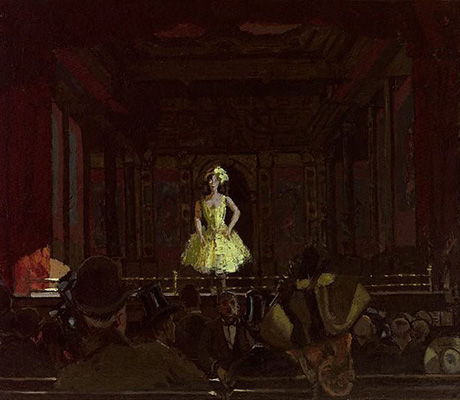
Katie Lawrence at Gatti's
In the early 1880s Walter Sickert, still in his early twenties, became a devoted follower of Whistler, entranced by the older artist's sultry color palettes. The young painter became Whistler's etching assistant, and worked on a series of tonal studies heavily indebted to him. Then, in 1883, he was introduced to the French Impressionist Edgar Degas, whose snapshot-like scenes of city life, such as Place de la Concorde (1875), would profoundly affect Sickert's career. He was also enthused by Degas's depiction of the hedonistic, seamy social life of the French capital, and for the remainder of his life would bring a similarly roving eye to the dancehalls and brothels of London.
It is possible to see works such as Katie Lawrence at Gatti's as combining a Whistlerian tonal range with the documentarist's eye and infatuation with night life personified by Degas. Critic Kenneth McConkey notes that when Sickert returned to London from a trip to Paris in 1885, "it was to give glowing accounts of the 'ballet girls' of an artist referred to by [his friend] Mortimer Menpes as 'Digars'"." Sickert acquired a Degas painting, and became "attracted to the café-concert, the low-life theatre which was arousing the interest of literati ." In this mood, he began to visit the performances of singer Katie Lawrence at Gatti's Hungerford Palace of Varieties, a music hall opened by the Swiss impresario Carlo Gatti in 1857. According to Sickert critic Wendy Baron, the painter produced 166 studies of Lawrence onstage between 1885 and 1888, which became the basis for a large number of paintings. The above work is the only one which survives; though completed several years later, it reflects the spirit of the earlier period in which the series was devised.
Baron notes that Katie Lawrence at Gatti's, based on "hundreds of tiny studies of the stage architecture the performers and the audience", was a matter of "extracting an effective composition from the mass of information gathered ." In this sense, the apparent informality of the piece is an illusion. Sickert followed Degas's atypically Impressionist advice that the artist should work in the studio to create a likeness of a scene at a particular moment more real than that moment itself. The result is an exemplary work of British Impressionism, capturing the spirit of the age in the artist's home city just as the French Impressionists had for Paris at the end of the nineteenth century.
Oil on canvas mounted on hardboard - Art Gallery of New South Wales
Knucklebones
This is one of a number of paintings that Philip Wilson Steer created during the 1880s depicting scenes on the beaches of Walberswick, a Suffolk sea-side resort in south-east England. In the foreground a mother or maid reclines while a group of children behind her play a throwing game called knucklebones. According to Kenneth McConkey, "the different treatments given to figures, shingle, and sea could each be related to different mentors whom Steer did not feel compelled to reconcile ." In particular, McConkey notes the use of "modified divisionism for the shingle, Monet's 'comma' brushstrokes for the sea and a Degas-esque grouping of figures ." The most striking of these features is the first, with Steer dotting complementary colors across the canvas suggest the visual texture of the shingle at a particular time of day, perhaps late afternoon, when warm sunlight is just beginning to modulate into shadow, bringing out deeper, bluish hues in the stones and sand.
The technique of divisionism was associated with a movement known variously as Pointillism and Neo-Impressionism. The method involved dabbing harmoniously contrasting colors adjacent to each other on the canvas, which, when "blended" in the eye of the viewer, would produce the desired tonal combination, but in a more intense and vivid way than if the color had been mixed on the canvas. The extraordinary effects of this technique can be seen in works such as Georges Seurat's A Sunday Afternoon on the Island of La Grande Jatte (1884-86), which, when displayed at the final Impressionist exhibition of 1886, seemed to herald a decisive shift. It is likely that Steer encountered Seurat's work through his friend Lucien Pissarro and brought it to be bear in a melding of styles typical of his adventurous and magpie-like borrowings of the 1880s-90s.
Paintings such as Knucklebones are significant in depicting English rural landscapes using the same cutting-edge methods as Steer's French contemporaries. Indeed, if Sickert was an artist of the city, Steer became known as a painter of the country and especially the coastline. For McConkey, the picture, which was included in the first London Impressionists exhibition of 1889, "set a kind of standard for all the various beach scenes by Steer and others produced in the 1890s ." Steer's delicate marine scenes were iconic enough by the 1920s that the character of Paunceforte in Virginia Woolf's To The Lighthouse (1927), a painter who can be found on the beach "imbuing the tip of his brush in some soft mound of green or pink," was recognized as a loose caricature of the artist.
Oil on canvas - Ipswich Museum
Kensington Gardens
Paul Maitland's idyllic park scenes captured the sunnier aspects of the London Impressionists' vision around the start of the 1890s. As a disabled artist, Maitland was unable to travel extensively, and thus remained wedded to the parkland environments immediately around his home in Chelsea, including Kensington Gardens, the Chelsea Embankment, and the riverside at Battersea. He worked at different times of day and year in the style of Monet to capture different effects of light, shade, and color. In this exemplary work from 1890, a game or sport perhaps proceeds lazily in the background, lit by sunlight which does not penetrate to the viewing position, the foreground shielded by an arrangement of trees whose trunks approach the form of silhouettes, as if they were partially barring the glow beyond.
Maitland was part of the London Impressionist group that came together in 1889, and like the other members of that group was a devotee of Whistler, though he also took much from the work of the French-born painter Theodore Roussel, his tutor for a time. Other members of that group included Francis Bate, Francis James, Bernard Sickert, Frederick Brown, and George Thomson, all of whom created significant work. Maitland's paintings were particularly effective in rendering the "magic and the poetry" of London life, as Sickert had called the artist to do in his introduction to the London Impressionists exhibition . Kenneth McConkey notes that Maitland's "scenes in Kensington Gardens with their tall trees and frail distant figures provide the basis of a vision of the capital which slowly emerged in the twenty years after the London Impressionists' exhibition and gave belated approval to Sickert's speculations ."
Maitland's disability and reclusive nature meant that he never acquired the fame or acclaim of contemporaries such as Steer and Sickert. He died in 1909 in his forties. Nonetheless, through the dreamlike calm of his city scenes, and by his association with societies such as the New English Art Club and the London Impressionists, Maitland made a notable but undervalued contribution to the development of British Impressionism - as did many of his peers.
Oil on canvas - Ashmolean Museum, Oxford
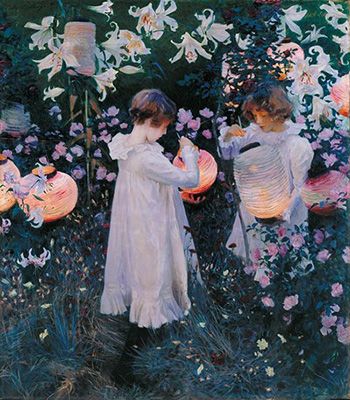
Carnation, Lily, Lily, Rose
As a North American-born painter like Whistler, John Singer Sargent lived his life as an expatriate, spending much of his career in Paris and London. By the time he created his most famous Impressionist-influenced work, Carnation, Lily, Lily, Rose, he was already famed as a portraitist in a glossy variant of Realism, influenced by the grandeur of Neoclassical and Academic painting. However, he had had an affinity with Impressionism since his training in Paris in the early-1870s, and during the mid-to-late 1880s Sargent entered a phase of notably Impressionist-influenced composition, perhaps prompted by the deepening of his friendship with Claude Monet, with whom he spent a period in 1885 painting at Giverny, near Paris.
In this work, named after the refrain of a popular song, two small children - the daughters of Sargent's illustrator friend Frederick Barnard - light paper lanterns in a garden strewn with flowers as the last light of evening fades in the sky. Following Impressionist methods, Sargent created the picture en plein air, and to capture the exact tonal effect he found in the early night sky he would paint for just a few minutes each evening. The strands of brushwork depicting the grass at the base suggest the impact of Sargent's summer painting sessions with Monet, but in its stark light/dark color contrasts and flattened perspective - with the lily patterns at the top of the frame almost suggesting an abstract pattern - the work implies the influence of Manet.
As a supremely talented artist in a relatively orthodox style, and because of his cosmopolitan affinities and travels, Sargent is difficult to place at the center of the story of British Impressionism. Roger Fry, writing after Sargent's death, dismissed this work, which he had admitted had "seemed a revelation of what colour could be and what painting might attempt, as "the first feeble echo which came across the channel of what Manet and his friends had been doing with a far different intensity for ten or more years ." However, with Carnation, Lily, Lily, Rose Sargent synthesized the developments of Impressionism from the position of a virtuosic outsider, presenting them to the British public for the first time. In this sense it was enormously influential. McConkey describes the painting, which was shown at the Royal Academy in 1887, as "essentially the first piece of public impressionism to be produced in Britain...for several years after its exhibition in 1887 it remained the salient example of the new manner ."
Oil on canvas - Collection of the Tate, United Kingdom
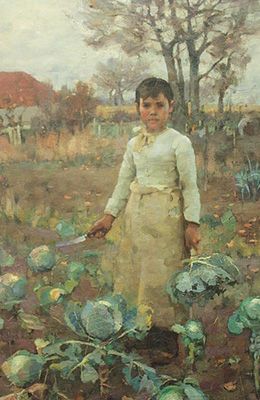
A Hind's Daughter
In this extraordinarily vivid work, one of the most important Scottish paintings of the nineteenth century, a young female farm worker holds the viewer's gaze with earnest, fragile assurance as she glances up from her work cutting cabbages. The blocklike brushwork of the background employs the characteristic ochre, autumnal tones that Guthrie and his compatriots favored while working at their artist's colony in Cockburnspath, where they had moved in the year of this painting's creation.
James Guthrie was one of a group of progressive-minded young artists who revolutionized Scottish painting during the 1880s-90s through their engagement with developments abroad and insistence on plein air representation of working Scottish life. The Glasgow Boys, as the group became known, were influenced by the Impressionism of Whistler but in many cases, and very notably in Guthrie's, more profoundly by the Naturalism of Jules Bastien-Lepage. The French artist had noted the Impressionists' development of a method for capturing the optical appearance of a scene at a particular moment. However, he sought to combine that anecdotal approach by relaying social realities more clearly through his work. His paintings often consist of thickly worked impressionistic backgrounds with hyperreal foreground figures, often laborers or peasants. Guthrie travelled to Paris in 1882 and was deeply affected by Bastien-Lepage's aesthetics, bringing many aspects of it, including the square brush-marks and earthy color palette, to this piece.
The Glasgow Boys represent a significant counterpoint to the London Impressionist school and in some ways reflect a more advanced British reaction to continental painting during the 1880s-90s. Because of its Naturalist themes, the Glasgow school's work often bears a deeper cultural and conceptual content than that of their London contemporaries, while combining elements of Impressionist technique with an intimate realism yielding great emotional weight. Other artists of this group, including John Lavery, James Guthrie, Edward Walton, and Joseph Crawhall, made significant contributions to the development of Impressionism and Naturalism in Britain at the close of the nineteenth century.
Oil on canvas - Scottish National Gallery, Edinburgh
Frederick and Jessie Etchells Painting
This striking work by the English artist and designer Vanessa Bell sits somewhat outside the stylistic and chronological parameters of British Impressionism. But it is worth exploring as an indication of the influence of Post-Impressionist styles on British art during the 1910s, by which time there was slightly more scope for women artists such as Bell, Laura Knight, and Sylvia Gosse, to develop Impressionist-informed styles. The painting depicts the brother and sister artists Frederick and Jessie Etchells, who would later join the Bells' Omega Workshop design studio, using thick brushwork and darkly outlined color planes that reflect new continental influences such as the work of Paul Gauguin.
According to Hanna Leaper writing for the Tate, the work was made "during a family summer holiday at Asheham House in Sussex in 1912," depicting "a room in the south extension of the house that served as a light, spacious studio, with French windows opening out onto a terrace and lawn." Bell rented Asheham House jointly with her sister Virginia Woolf and it provided a liberating creative environment for the artist, in which she created several works "foreground[ing] the pleasures of friendship, domesticity and concentrated work."
The broader context for the creation of Frederick and Jessie Etchells Painting was the arrival of Post-Impressionist influences in the British art scene through the 1910 exhibition Manet and the Post-Impressionists, curated by Bell's friend and sometime lover, the critic Roger Fry. The exhibition caused a scandal but was later viewed as a great liberating force within British culture. The influence of Post-Impressionist aesthetics over members of the Bloomsbury group - of which Vanessa and Virginia were members - was profound and extended across several disciplines. Indeed, the most significant long-term impact of Post-Impressionism, and therefore Impressionism, on British art was arguably in the novels of Virginia Woolf, which use language to relay the inner life of the subject in a manner that drew much from the emotive, expressionistic qualities of the last few generations of French painting.
Oil paint on wood - Collection of the Tate, United Kingdom
Beginnings of British Impressionism
Impressionism: French or British?
The question of when Impressionism took hold in Britain is unresolved because Impressionism's geographical and historical origins remain a matter of debate. In 1885, when a new art club was founded by a group of progressively minded British artists enthused by the Impressionist style, they initially considered calling themselves The Society of Anglo-French Painters. Although they eventually decided on New English Art Club - and over the following decade that collective became a hub for developments in British Impressionism - their original preference of name suggests that they saw Impressionism as a recent foreign trend, a French phenomenon of the 1860s-70s, by whose example they could revive creative spirits across the channel.
This is in contrast to the earliest histories of Impressionism in Britain that began to appear two decades later, in the early twentieth century. These tended to stress the native British precedents for the style, stretching back to the daringly abstract seascapes of JMW Turner and light-filled vistas of John Constable, created during the early nineteenth century. Although some modern critics have downplayed these readings as parochial, at one time it was felt that the impact of British Romantic artists such as Constable and Turner on Impressionism was so strong that the first, French Impressionist painters must have learned considerably from them.
Turner, Constable, and the Romantic movement
Some British art prior to the 1860s, in particular that of the early-nineteenth-century Romantic movement, predicts the formal and tonal advances of French Impressionism, even if direct practical connections between the different times and places are hard to pin down.
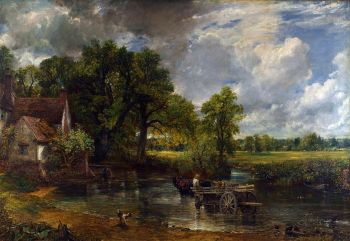
John Constable, born in 1776 in East Bergholt, Suffolk, was a landscape painter renowned for his detailed, realistic observations of natural scenes, which he created on site rather than in the studio, a revolutionary approach at the time. His work was exhibited in the Paris Salons from the 1820s onwards and he became a more influential and revered figure abroad than in his home country, notably inspiring the French Romantic painter Eugène Delacroix, often seen as a proto-Impressionist.
Constable's close attention to the natural world, in particular the play of light on foliage and water, influenced subsequent generations of French painters including Camille Corot and the Barbizon School. The work of these artists, in turn, vitally fed the Impressionist imagination. Constable's approach of painting en plein air also became a calling card of almost all landscape painters of the later nineteenth century, and one of the defining features of Impressionism.
Later in his career, and in his more informal "sketches," Constable experimented with a strikingly painterly approach, allowing visible brushwork on the canvas to evoke the mood of spirit of his subject-matter. This is particularly evident in works such as Rain Storm Over the Sea (c.1824-28), which pre-empt the Impressionists' use of ostentatious mark-making to draw attention to the composition process.
Constable's contemporary and rival J.M.W. Turner was born in 1775 in Covent Garden, London, into a working-class family. Turner developed a still more imaginative, light-infused and expressive form of landscape painting than Constable. Indeed, if Constable influenced the painters who inspired the Impressionists, Turner is often seen to have more directly predicted the approach of the revolutionary French school.
Like Constable, Turner developed a more unusual approach to landscape painting as he grew older. Between early works such as Dutch Boats in a Gale (1801) and late masterpieces like Light and Colour (Goethe's Theory) - the Morning after the Deluge - Moses Writing the Book of Genesis (1843) we can sense a sea-change. From capturing the atmospherics of a scene - in this case a stormy sea - through naturalistic detail emerges a fascination with relaying the elemental spirit of that subject by moving beyond direct representation. A vortex of color and light encloses the protagonist of the later work - in the process of receiving direct commandment from God - consisting of mobile, evocative brushwork.
Art historian John House suggests that Claude Monet and Camille Pissarro, two French Impressionists who fled to London at the outbreak of the Franco-Prussian War in 1870-71, encountered Turner's work during that year and may have been influenced by it. By that time, admittedly, the major Impressionists were already well on their way to establishing a "refined and flexible shorthand for the representation of the colors and textures of the natural world ."
Whistler's Early Years
By the time Monet and Pissarro were encountering Turner's work in London, a North American-born contemporary of theirs was already forging a unique path through the Romantic and Realist traditions from his base on the rapidly industrializing banks of the Thames. James Abbott McNeill Whistler was born in 1834 in Lowell, Massachusetts to a military family. He studied engineering at West Point while his brother William worked as a doctor for the confederacy during the US Civil War.
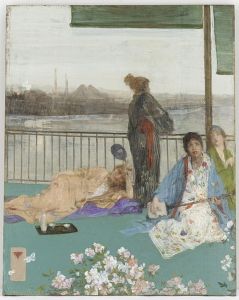
In 1855 Whistler left America for Paris to study art, never to return to his homeland. He would divide the rest of his working life between the French capital and London, which he began to visit almost immediately to stay with his half-sister, settling there permanently in 1859. After an early period of experimentation with Realism, by the late 1860s, Whistler was pursuing a more abstract approach, synthesizing the influences of classical Greek art and Japanese woodblock print. He also became concerned with capturing the temporal atmospherics of a scene in a way which necessitated simpler, bolder, more gestural brushwork. These influences come across in works such as Variations in Flesh Colour and Green: The Balcony, which predict the misty cityscapes and informal detailing of human activity in much Impressionism.
French Impressionists, British Protégés
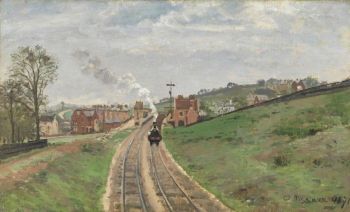
When Monet and Pissarro fled to London in 1870, accompanied by the Paris-born British artist Alfred Sisley, they immediately began to paint their new, suburban surroundings. Pissarro's Lordship Lane Station, Dulwich shows a train departing from a recently built station designed to serve visitors to the growing community of Dulwich in south London, including its new tourist attraction, the Crystal Palace. The body of work produced by the French Impressionists in London during 1870-71 reflects their wider influence on British artists.
The Impressionists' dealer Paul Durand-Ruel had escaped to London with them, and in December 1870 set up a gallery on New Bond Street, where he would hold ten exhibitions of the Society of French Artists, beginning that year. If these exhibitions spread French Impressionism to British students and acolytes - a wave of influence which had become more consuming by the 1880s - the latter were also travelling directly to the source of the new movement to draw inspiration and education. Critic of British Impressionism Kenneth McConkey notes that in the 1870s "Paris suddenly became a kind of Mecca," famed for its atelier-based approach to art education, dispensing with academic concerns such as fineness of finish. Within a decade or so, this approach had led to the emergence of Impressionism, which increased British interest in the art-school scene across the channel.
During this period relationships were forged between French masters and British followers, setting in train the emergence of a distinctively British Impressionism. The case of Walter Sickert and Edgar Degas is instructive. In the early 1880s, Sickert was part of a group of young British painters dedicated to the tonal style of Whistler. However, over the course of a series of meetings from 1883 onwards, Sickert was introduced to Degas's more socially-observant approach. McConkey notes that "Degas contributed greatly to Sickert's education," the latter becoming one of many young British painters who, "inspired by reports of the depiction of street life [by French Impressionists], went around London trying to paint from the top of hansom cabs [open-top horse-drawn carriages]."
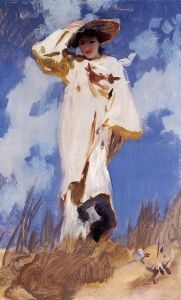
The British-based American artist John Singer Sargent forged a comparable though less hierarchical relationship with Claude Monet. By the early 1880s Sargent, in contrast to Sickert, was already a renowned artist, a glamorous high-society portraitist in a grand, almost Neoclassical style. But following a meeting with Monet in 1876, he began to bring a more impressionistic approach to his sketches and outdoor scenes. This is evident in works such as the 1887 beach-scene A Gust of Wind, and in his famous homage (or pastiche) of the same year, Claude Monet Painting at the Edge of a Wood.
The Influence of Jules Bastien-Lepage and Naturalism
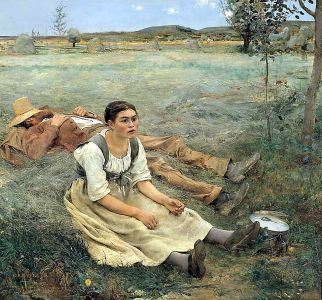
French Impressionism took hold in Britain in the context of wider channels of influence from the continent. By 1880, some Impressionists were beginning to feel frustrated with the perceived limits of a style focused on conveying the momentary impression of a scene, concerned that Impressionism was unable to offer deeper concept or commentary. That same year, Jules Bastien-Lepage's Haymaking was displayed in London for the first time.
This work combined an Impressionist-responsive open landscape with a cast of foreground figures depicted in a searingly emotive style influenced by the Realism of Courbet and Millet. This painting - and Bastien-Lepage's work more generally, which rose to sudden meteoric prominence - was seen by many to have advanced on the gains of Impressionism. It offered a fuller, more socially and ethically charged form of modern landscape and genre painting - a type of Naturalism - with a unique formal approach combining patches of blocky abstraction with areas of hyper-realistic detail.
It was only around the early 1880s that British artists were starting to engage concertedly with the examples of Impressionism. The fact that they imbibed it along with the style of Bastien-Lepage that the two became entwined in some British perceptions of Impressionism. In the work of the English artist George Clausen, and in the painting of Glasgow Boys such as John Lavery, the influence of Impressionism is veiled by, or implicit within, that of Bastien-Lepage. Works such as Clausen's Breton Girl Carrying a Jar (1882) exemplify this sense.
Social and Industrial Change
Like their French counterparts, British artists were reacting to the ongoing social trends of the nineteenth century: increasingly rapid industrialization and urbanization; the advent of train travel, telegraphy, and other new communication and transport methods; the photographic revolution and associated advent of novel means of reproducing artworks. All of these was registered in the minds of British Impressionists, both directly and indirectly through the example of their French forerunners.
Kenneth McConkey offers the following characterization of the mood within the British art scene during the final quarter of the nineteenth century, in which all of the influences just discussed appear folded together, setting the scene for the arrival of the New English Art Club and British Impressionism as a visible movement: "While great Academicians...continued to dominate the official exhibitions, there were suddenly tensions of a kind not experienced before. This was the result of widespread dissatisfaction with art education, which led students in unprecedented numbers to take the channel packet-boat to learn their craft in Paris. There was dissatisfaction with the Royal Academy and a desire to see its exhibition practices overhauled...All of this occurred when images of all types of proliferating, when photography was claiming the status of fine art, and when it was technically possible for a painting exhibited in one country to be faithfully reproduced and widely distributed in another...Impressionist and Salon Naturalist painters like Claude Monet, Camille Pissarro, Alfred Sisley and Jules Bastien-Lepage all worked in London...More than in previous decades there is a sense of a whole generation physically pressing against its fathers ."
Concepts and Trends
Whistler's Nocturnes
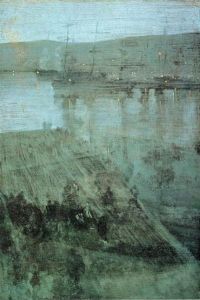
The aesthete and dandy James Whistler became an imperious force within British Impressionism. One of his most important contributions to the Impressionist canon was the series of Nocturnes he had begun almost a decade earlier, in 1866. He created the first on a trip to Chile, then in the throes of a war of independence against Spain.
The reasons for this visit remain relatively mysterious, but during a stay in the besieged port town of Valparaíso, Whistler created what his biographer Daniel E. Sullivan describes as "something quite different" from his previous oeuvre, a waterside scene of ghostly or translucent detail set against a gloomy background wash that seemed almost as if it might swallow up the buildings and people. "Whistler had painted the Thames shrouded in mist or fog [for example in Chelsea in Ice (1864)] but this night scene, its effects reminiscent of earlier pictures by his Pre-Raphaelite friends Holman Hunt and George Boyce, presaged the next dramatic step in his art ."
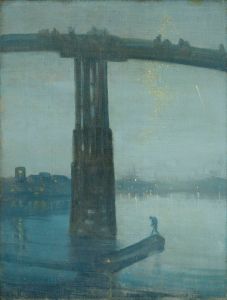
Over the next decade, Whistler created a whole series of Nocturnes, the majority of them in his adopted home city of London: river-side scenes in which the influence of Japonism can be felt in the stylized presentation of people and river-borne craft as calligraphic dashes of paint. The critic Frances Spalding describes the method he used to create these works, which was perfected in the early 1870s: He developed a system and a formula which he could vary with subtle effect. He would mix his colours beforehand, using a lot of medium, until he had, as he called it, a 'sauce'. Then, on a canvas often prepared with a red ground to force up the blues and suggest darkness behind, he would pour on the fluid paint, often painting on the floor to prevent the paint running off, and, with long strokes of the brush pulled from one side to another, would create the sky, buildings and river, subtly altering the tones where necessary and blending them with the utmost skill .
As Spalding adds, the effect is that "out of the decorative unity...grow atmosphere and mystery, the sense that the visible world thinly veils the inexplicable."
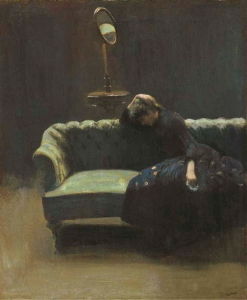
Whistler's work is central to the story of Impressionism as a whole. Since at least 1863, when his Symphony in White, No. 1: The White Girl (1861-62) was displayed to acclaim at the inaugural Salon des Refusés, there had been lines of communication and mutual creative response between Whistler in London and his contemporaries in France. These were deepened when Monet, Pissarro and others sojourned in England during the Franco-Prussian War of 1870-71. House posits that Whistler's night-time river scenes of the 1860s-70s, his so-called Nocturnes, influenced Monet's genre-defining Impression, Sunrise (1872), specifically "the broadly brushed, liquid swathes of paint that convey the sky and water, and the shadowy silhouettes of the ships and cranes in the background [.]" Significantly, Whistler was invited to exhibit at the inaugural Impressionist group exhibition in Paris in 1874 - although the artist's refusal of that invitation reflects the distance which he sought to establish between his own work and that of his European peers.
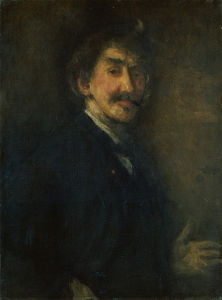
The impact of Whistler's work and persona was still more profound in Britain. According to Sutherland, by the early 1880s friends were noticing that "'a sort of claque' of young artists had already formed around Whistler." Most significantly, a young painter called Walter Sickert had, by 1882, "abandoned his classes with [Alphonse] Legros at the Slade School to follow Whistler....Sickert, who had worshiped Whistler since the first Gros¬venor show [in 1877], declared to a friend, 'Such a man! The only painter alive who has first immense genius, then conscientious persistent work striving after his ideal'." Sutherland also notes that the painter Philip Wilson Steer, though "he had never been an abject follower...learned much from Whistler ."
In the 1890s, and particularly after a falling out with Sickert, a group of Scottish painters called the Glasgow Boys, including John Lavery, Edward Walton, Joseph Crawhall, and James Guthrie, began to replace the earlier group in Whistler's affections. The relationship was established in 1891, when a cohort led by Walton secured the purchase of Whistler's Arrangement in Grey and Black, No. 2: Portrait of Thomas Carlyle (1872-73) for the City of Glasgow. Seven years later, when the Glasgow Boys were central to the formation of a new art club, the International Society of Sculptors, Painters and Gravers, Whistler was installed as its first president.
The New English Art Club
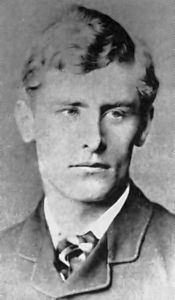
By the late 1880s the group that had begun to coalesce around Whistler earlier in the decade was larger, more expansive in its connections and tastes, and more self-confident of its range of approaches. Sickert had turned to the work of Degas, for example, and begun to adopt the music-hall and low-brow entertainment themes favored by his new mentor. Philip Wilson Steer, who trained in Paris during 1882-84, set out on what McConkey calls "[a] swift advance towards the more extreme form of Impressionism," developing techniques derived from Monet, Manet, Whistler and others and ultimately arriving at a form of Pointillism.
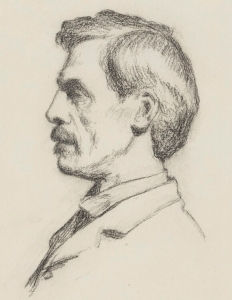
In 1885, a group of fifteen painters founded a new art society to express the changes in contemporary art that they felt the Royal Academy was overlooking. Writing for the National Portrait Gallery, Elizabeth Heath notes that their aim was to "establish an exhibiting society along French lines," perhaps on the model of the Société Anonyme des Artistes, Peintres, Sculpteurs, Graveurs, formed in 1874 by the Impressionists in Paris. Like that organization, the new club "was to be 'run by artists for artists ', jury." This democratic, anti-hierarchical spirit - summed up in the constitution drawn up founder member Frederick Brown - was as much as an aspect of the Impressionist approach as any compositional scruple.
The group was a broad church but its members held certain principles and experiences in common. "Having studied in Paris," Heath continues, "these men were influenced by the plein-air painting of Jules Bastien-Lepage and the Barbizon School and also by the Impressionists. All felt that the Royal Academy had not given this new approach to painting its due. Moreover, they wished to rebel against what they perceived to be the diluted Pre-Raphaelitism dominant within the establishment, with its piecemeal observation uncontrolled by general tone ." They also placed the unifying formal beauty of the artwork above all other concerns, a position indebted to Whistler. Indeed, Sutherland notes that the Club was "filled with admirers of Whistler ."
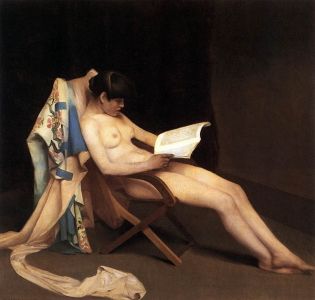
According to Kenneth McConkey, the Club "first convened on 4 January 1886, and began planning for an exhibition to open at the beginning of April, one month before the Royal Academy ." The first exhibition of the new English Art Club duly commenced on 12 April 1886, by which time the group had swelled to fifty members. Of these 43 exhibited, showing a total of 58 pictures and 12 sculptures. The collective included a strong British Impressionist contingent including Sickert, Steer, Sydney Starr, Francis Bate, and the French-born Theodore Roussel. There were also artists such as George Clausen who were more committed to the aesthetics of Bastien-Lepage, as well as representatives of the Whistlerian Glasgow Boys and the Naturalist-influenced artists' colony at Newlyn in Cornwall, south-west England.
The show was almost scuppered before it began when the art dealer Martin Colnaghi, who had agreed to cover the artists' rent for use of the Marlborough Gallery in London, withdrew his support after seeing exhibiting artist Henry Scott Tuke's study of nude boys The Bathers (1886). In the end, however, club member W.J. Laidlay was able to make up the balance. Press reaction was generally favorable. A critic for the Pall Mall Gazette wrote that 'the three score works in the exhibition reveal a quite unexpected variety of subject and treatment, and undoubtedly a very much higher level of excellence than is to be found in the average Academy or Grosvenor Gallery '.
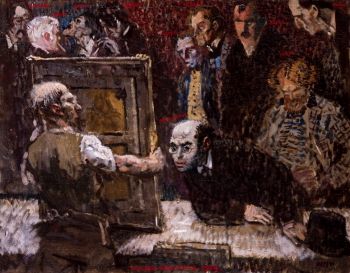
However, McConkey points out that the Club's activities also succeeded in "flushing out reactionary opinions," just as the first Impressionist exhibition in Paris in 1874 had drawn the ire of conservative critics. The painter William Powell Frith declared the young painters' minds to be "in a state of disease," while the President of the Royal Society of Painters in Watercolors Sir James Linton accused the exhibited work of rehashing the work of the French Realist School, in particular Millet .
The London Impressionists Exhibition
In 1889, a group of painters broadly indebted to Whistler, and at the more Impressionist end of the stylistic scale represented at the New English Art Club, split off from the Club to form a smaller grouping dubbed The London Impressionists. Their number included Roussel, Sickert, Steer, Paul Maitland, Francis Bate, Bernard Sickert, Frederick Brown, and George Thomson. According to Steer's friend and biographer D.S. MacColl, "Walter Sickert took the critical lead amongst them," responding with a waspishness learned from Whistler to the fact that "Impressionism...was the nickname for any new painting that surprised or annoyed critic or public ."
Feeling that London's status as a great metropolis of the modern age needed to be reflected in contemporary art just as Paris had been, the group mounted an inaugural exhibition in 1889 at the Goupil Gallery. Sickert penned the catalogue's introduction, announcing that: "Essentially and firstly [Impressionism] is not realism. It has no wish to record anything merely because it exists. It is not occupied in a struggle to make intensely real and solid the sordid or superficial details of the subjects it selects. It accepts, as the aim of the picture, what Edgar Allan Poe asserts to be the sole legitimate province of the poem, beauty."
The artist went on to declare that "beauty" was not only to be found in the natural world. Impressionism "is, on the contrary, strong in the belief that for those who live in the most wonderful and complex city in the world, the most fruitful course of study lies in a persistent effort to render the magic and the poetry which they daily see around them ."
The Glasgow Boys
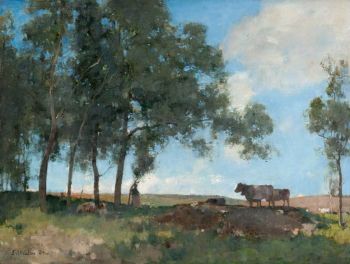
The Glasgow Boys were an informal and changeable group of young Scottish painters variously influenced by the Impressionism of Whistler and by Naturalism. Some of the key members included Arthur Melville, Thomas Millie Dow, George Henry, John Lavery, James Guthrie, Edward Walton, Joseph Crawhall, and William York MacGregor.
The art critic Susie Hodge notes that the collective first began to muster around the end of the 1870s, when a number of them started to gather at MacGregor's studio. They forged an identity in opposition to the Edinburgh art establishment - particularly the Royal Society of Artists - and the Glasgow Art Club, both of which were seen as parochial and conservative.
Hodge notes that "sketching and painting outdoors was the Boys' major departure from the usual Scottish practice of painting in the studio; their use of realism and naturalism over sentimentality was also different, as was their application of loose, wide, often square brushmarks, and the build-up of the effects of light and shade with patches of subtly changing colour ." Many of their number had studied and Paris and the facture style Hodge describes owes much to Bastien-Lepage. At the same time, they were enthralled by the misty, moody ambience of Whistler's city scenes, and brought much of his spirit to their work.
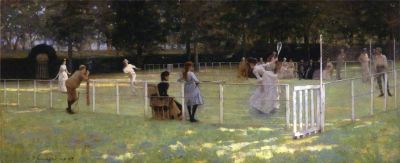
The first exhibition of the Glasgow Boys' work was mounted at Glasgow Institute of Fine Arts in 1885. Over the previous half-decade, the gallery had shown works by significant landscape artists, Naturalists, and Impressionists including Turner, Constable, Corot, Millet, Bastien-Lepage, and Whistler, all of which fed into the young painters' evolving styles. At the first exhibition, important works of British Impressionism and Naturalism such as John Lavery's The Tennis Party (1885) were shown.
In his autobiography The Life of a Painter John Lavery summed up some of the influences on the group and outlined its course of development: "Although we at Glasgow worked with a richer palette than Whistler, we recognized in him the greatest artist of the day . But Bastien-Lepage was a still more foundational influence: Although I had only seen Bastien-Lepage on one occasion...I had never forgotten his advice on figures in motion. Pointing to people passing he said: 'Always carry a sketchbook. Select a person - watch him - then put down as much as you remember. Never look twice....' From that day on I became obsessed by figures in motion, which resulted finally in the Tennis Party and drew attention to what became known as The Glasgow School ."
Artists' Colonies
Many British Impressionists and fellow travelers formed colonies in small rural communities around Britain and abroad. They were inspired by the French Impressionists' trips to locations outside of Paris to paint en plein air, but also by the Barbizon School and the Naturalists, who had taken off to rural and woodland locations for months or years on end, establishing more deeply embedded relationships with particular places.
The London Impressionist group were perhaps too wedded to city life to draw much from this approach, but the Glasgow Boys undertook a number of collective sojourns to locations across Scotland and France. From 1775 onwards, many of them set up camp in the small village of Grez-sur-Loing on the outskirts of the Barbizon Forest, emulating the earlier Barbizon school. Locations closer to home were also important. In 1881 a summer camp was established at Brig o' Turk in the Trossachs hills, and two years later a more permanent camp in the settlement of Cockburnspath in the Scottish Borders. Here some of the masterpieces of the group, such as Guthrie's A Hind's Daughter (1883) and George Henry's Playmates (1884), were created. Other locations such as Helensburgh and Rosneath in Argyle and Kircudbright in Dumfries and Galloway were also important.
Later Developments - After British Impressionism
The Legacy of British Impressionism
The British Impressionist movement proved to be a testing ground for many of the most talented artists of the following half-century and branched off in a range of directions that its French counterpart movement could not have anticipated. Most obviously, through the work and persona of Whistler, Impressionism in Britain became associated with the dandyish aesthetics of Art for Art's Sake and Aestheticism during the 1890s. Whistler's biographer Daniel E. Sutherland emphasizes the extent to which Oscar Wilde, the figurehead of the era, modelled his public persona on Whistler's waspish humor, love of beauty, and scorn for moralizing, commenting that "Whistler's most famous disciple, if such he may be called, was not an artist at all ."
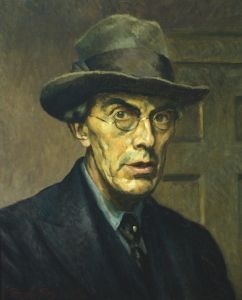
Although it would be easy to cast British Impressionism as an after-echo or inferior replica of the French movement, it is also worth noting that through the figure of Whistler, British art was influential on the initial stylistic development of the movement as a whole. Moreover, artists such as Walter Sickert developed distinctive styles that were clearly indebted to French counterparts. Sickert, for example, brought a dark color palette and an air of grimy mystery to his urban scenes in a way that is not found in the French Impressionist canon, while Scottish artists such as Guthrie melded the effects of Impressionism and Naturalism to produce a moving form of rural social realism. Post-Impressionism in Britain
The artists associated with the Glasgow Boys, New English Art Club, London Impressionists and other networks of British Impressionism went on to develop a range of individual and divergent styles across the final decade of the nineteenth century and the first decade of the twentieth. However, on or around 1910, a number of developments in British art began to reflect the common impact of what became known as Post-Impressionism.
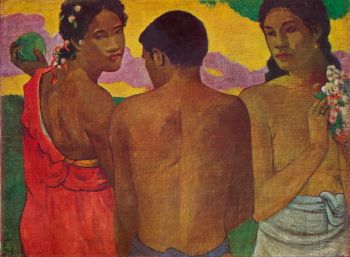
The English critic, curator, and painter Roger Fry in that year mounted an exhibition entitled Manet and the Post-Impressionists at London's Grafton Galleries. Fry had been a devotee of modern French art since encountering the work of Cézanne and wanted to impress upon the British public the fact that the (still only grudgingly accepted) Impressionist revolution had been superseded by another. Artists in France were now less interested in using paint to record the momentary impression of a scene than in using a range of stylized and idiosyncratic color combinations and brush techniques to convey the emotional and spiritual import of their subject. Fry held that Manet was the instigator of this revolution, which was exemplified by the work of Gauguin, Van Gogh, and other major figures of recent European art.
The show was a critical and commercial disaster but it fomented a change in the perception of art amongst the more advanced British writers, critics, and artist. Famously, the novelist Virginia Woolf wrote, with reference to the show, that "[o]n or about December 1910, human character changed." A mongst the Bloomsbury group, including Woolf, Fry, the designer and artist Vanessa Bell (Woolf's sister), critic Clive Bell, and artist Duncan Grant, the Post-Impressionist turn had implications across a range of media, from visual art to writing and interior design. Woolf developed what many saw as an Impressionist writing style - building on the interior monologue techniques pioneered by authors such as Joseph Conrad and Henry James - while Vanessa Bell brought a Post-Impressionist aesthetic to printmaking and other commercial design processes, as well as to her painting.
The Camden Town Group
In 1911, a year after Fry's show, Walter Sickert convened a group that would continue to develop new approaches to depicting the life of the English capital. The Camden Town Group, as it came to be known, had developed partly out of the Allied Artists Association formed three years previously, to provide space for artists deemed to be too modern for the tastes of the Royal Academy. Influences on the group included Van Gogh and Gauguin, as well as their London surroundings and the social trends of English society just prior to the outbreak of the First World War.
Amongst the artists associated with the group, many went on to find fame, including Wyndham Lewis, Augustus John, and Spencer Gore. Moreover, although women were not necessarily treated as equals by the collective, a number of female artists such as Sylvia Gosse worked in comparable style and context, while the famous British realist painter Laura Knight was at this early stage of her career deploying an Impressionist-influenced style. Thus, the era of the Bloomsbury set and Camden Town Group provided a creative platform for women artists influenced by Impressionism in a way that British Impressionism two decades earlier had not.
Useful Resources on British Impressionism
- James McNeill Whistler: Beyond the MythBy Ronald K. Anderson and Anne Koval
- Sickert: Paintings and DrawingsOur PickBy Wendy Baron
- The EY Exhibition: Impressionists in London; French Artists in Exile (1870-1904)By Alexis Clark
- Impressionists in England: The Critical ReceptionBy Kate Flint
- Glasgow Boys: Masterpieces of ArtBy Susie Hodge
- The Life of A PainterBy John Lavery
- Turner Whistler MonetOur PickBy Katherine Lochnan
- Philip Wilson SteerBy D.S. MacColl
- British ImpressionismOur PickBy Kenneth McConkey
- Impressionism in BritainBy Kenneth McConkey with Anna Gruetzner Robins
- Memory and Desire: Painting in Britain and Ireland at the Turn of the Twentieth CenturyBy Kenneth McConkey
- John Singer Sargent: His PortraitBy Stanley Olson
- Whistler: A Life for Art's SakeOur PickBy Daniel E. Sutherland
- WhistlerBy Frances Spalding
 Ask The Art Story AI
Ask The Art Story AI